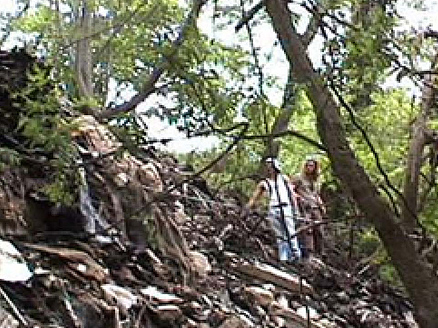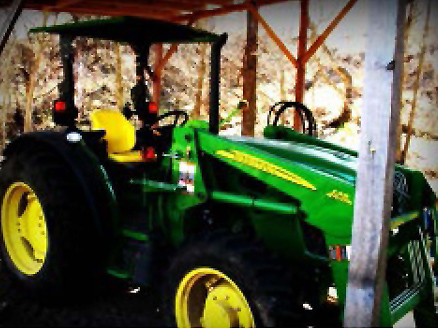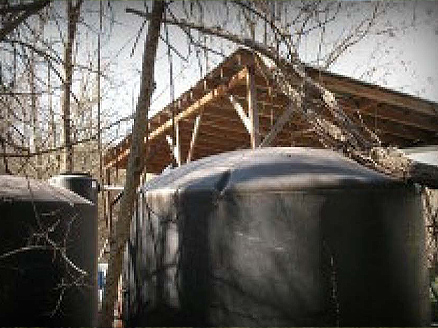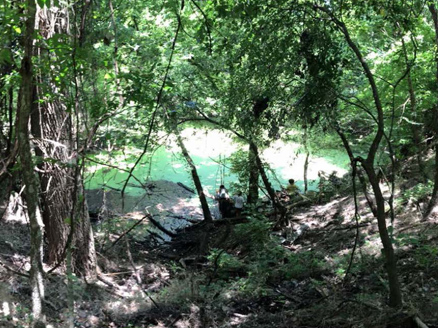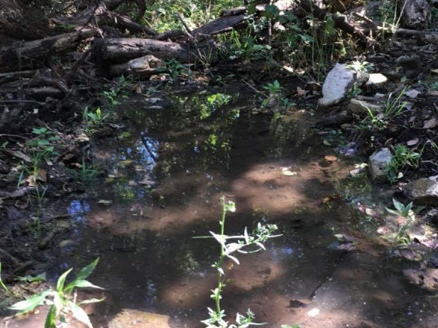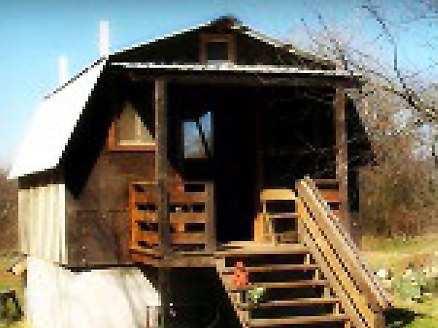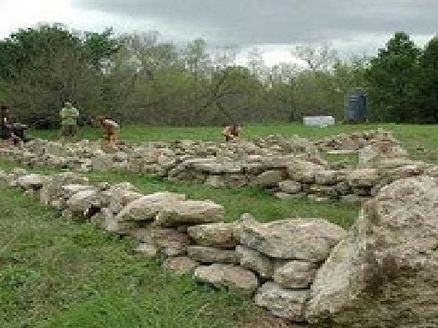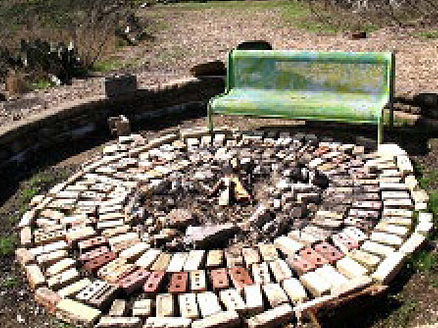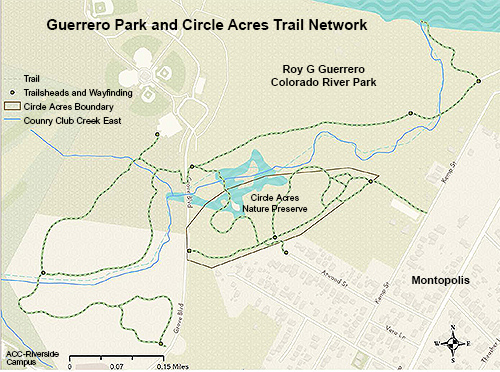Austin, Texas
Brownfield
Click on images
below for details
Cleanup Objectives: Remediate a 9.8-acre property contaminated by volatile organic compounds, metals, pesticides and herbicides. The contamination resulted from illegal dumping that occurred following capping and closure of the site's 3.6-acre municipal landfill for household solid waste. Over 15 years, approximately 5,000 cubic yards of debris such as discarded appliances, tires and construction materials were deposited at the property. Additionally, polluted urban stormwater runoff routinely collected in the property's retention ponds. The site lies approximately one-half mile from the Colorado River and adjoins Austin's extensive Roy G. Guerrero Colorado River Metro Park.
Green Remediation Strategy: The strategy integrated a range of best management practices (BMPs) to reduce the environmental footprint of site cleanup while preparing the site for reuse. Project activities were initially leveraged by a U.S. Environmental Protection Agency brownfields grant to Rhizome Collective, Inc., a nonprofit environmental group to which the property was donated for the purpose of cleanup and transformation to an environmental education center and ecological justice park. BMPs applied during the year-long cleanup, which included removing approximately 100 tons of trash, included:
- Use sustainably-produced biofuel to operate equipment or machinery.
- Deploy onsite renewable energy systems rather than a nonrenewable-sourced electric grid to power electricity-driven equipment.
- Capture and store rainwater as a source of non-potable water for onsite purposes.
- Use organic material such as compost instead of chemical fertilizers to amend soil requiring nutritional supplements.
- Use biobased rather than synthetic or highly processed materials to enhance degradation of contaminants.
- Salvage organic debris that is uncontaminated and free of pests or disease for beneficial uses such as infilling ground surfaces or controlling erosion.
- Salvage uncontaminated objects and infrastructure components with potential recycling, sale, donation or reuse value.
- Choose native rather than non-native species of plants for site restoration.
Results:
- Reduced air emissions by choosing 100% waste-derived biodiesel rather than petroleum-based diesel to operate a tractor used for removing large debris. The fuel was obtained from a company that collects and processes waste vegetable oil from restaurants throughout central and northeast Texas.
- Avoided the need for grid electricity by using a small photovoltaic array to operate power tools. Post-remediation activities at the site continue without the use of grid electricity generated by nonrenewable resources.
- Enhanced the potential for bioremediation to occur in an existing onsite pond by constructing floating islands that created habitat for naturally-occurring life forms capable of biodegrading residual toxins. The islands were constructed of recovered plastic bottles. Native wetland plants known for their abilities to remove contaminants from water were attached to the floating islands, which rose and fell as water levels fluctuated in the pond.
- Converted the onsite debris-impacted pond to a preservation area for aquatic life. Preservation of an adjacent, intermittent wetland, which provides a source of cleaner water for wildlife during dry weather, has included introducing Correll's false dragonhead (Physostegia correllii), an endangered water-loving perennial that is native to parts of Texas.
- Began harvesting rainwater and routinely storing 7,000 gallons of the water in aboveground tanks that serve as a source of non-potable water for onsite uses such as equipment washing or fire-extinguishment preparedness.
- Collecting and storing water from small seeps that became evident after all trash was removed from the site. Following a two-year drought, a network of troughs was created to concentrate and divert the seeps away from the capped landfill via gravity feed. The collected seepage flows to the onsite pond, which provides water for ongoing activities such as maintaining a native plant nursery and establishing native plants across the property.
- Reduced potential soil erosion along onsite recreational trails by lining their surfaces with chipped or shredded wood chips derived from the site's woody debris and discarded construction materials. Additionally, an erosion-prone gulley was stabilized through strategic surface placement of salvaged debris and onsite rocks.
- Avoided onsite introduction of potential contaminants by using biodegradable rather than petroleum-based lubricants to operate chainsaws during the cutting of woody debris for various onsite uses.
- Avoided resource use associated with deployment of field personnel and equipment for the sole purpose of administering substrates that could aid biodegradation of residual soil contaminants. The chainsaw lubricants used for cutting onsite woody debris were inoculated with oyster mushroom spores intended to disperse and establish on decomposing wood and other organic matter, thereby supplying contaminant-degrading fungi.
- Began onsite production of compost from various organic wastes generated at or near the site, for onsite use as soil amendments where needed.
- Extracted and disposed of 680 discarded tires at an Austin municipal recycling facility.
- Salvaged 31.6 tons of metal that was sold to a local recycler.
- Used scrap concrete to construct protective borders for onsite garden beds and reclaimed bricks to construct an outdoor meeting area.
- Increased the potential for biodiversity across the site and nearby properties by restoring natural habitat. Voluntary observations of biodiversity at the site, which is now known as the Circle Acres Nature Preserve, are tracked by iNaturalist, a joint initiative of the California Academy of Sciences and the National Geographic Society. Additionally, bird observations at Circle Aces can be reported to the Cornell Lab of Ornithology through eBird.
- Providing a platform for community education concerning sustainable land use and urban wildlife preservation. As current owner of the site, Ecology Action of Texas and its volunteer team provide tours of this former brownfield property. Circle Acres also offers hands-on experience in community-wide projects such as cleaning up and restoring upstream wetlands and extending nature trails in the adjacent Roy G. Guerrero Colorado River Metro Park. A portion of the extended trail system will connect to the Circle Acres Nature Preserve.
Property End Use: Wildlife sanctuary and educational center
Point of Contact: Amber Howard, U.S. EPA Region 6; Eric Paulus, Ecology Action of Texas
Update: July 2020





